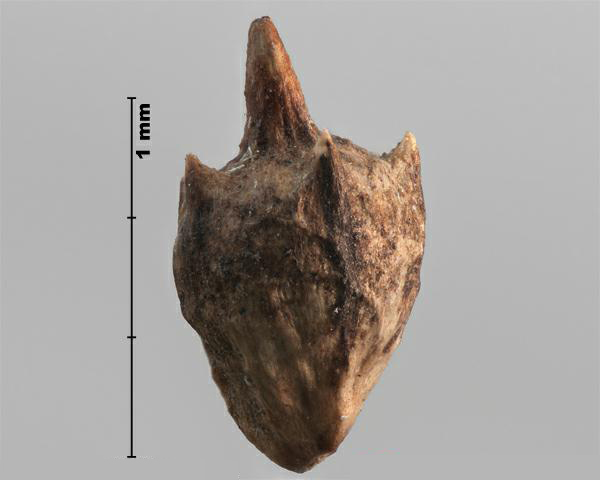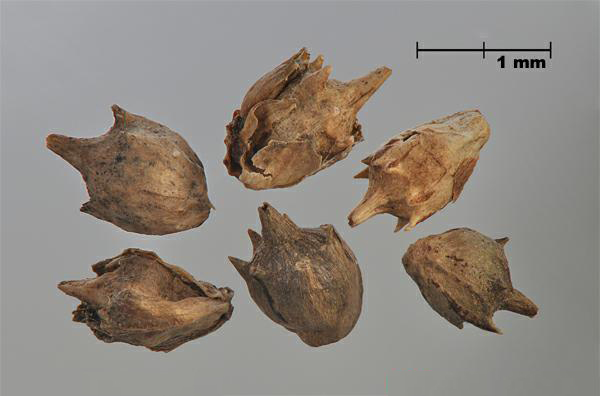Family
Asteraceae
Common Name
Giant ragweed
Regulation
Primary Noxious, Class 2 in the Canadian Weed Seeds Order, 2016 under the Seeds Act.
Distribution
Canadian: Occurs in AB, MB, NB, NS, ON, PE, QC and SK. Reported as ephemeral in BC (Brouillet et al. 2016Footnote 1).
Worldwide: Native to North America and introduced to Asia (China, Georgia, Israel, Japan) and Europe (USDA-ARS 2016Footnote 2).
Duration of life cycle
Annual
Seed or fruit type
Achene within a bur
Identification features
Size
- Bur length (not including apical spine): 4.0 - 7.0 mm
- Bur width: 4.0 - 6.0 mm
- Bur apical spine length: 1.8 - 2.5 mm
Shape
- Ovate to obovate burs with a narrow base and a large apical spine
Surface Texture
- Burs woody and dull
Colour
- Burs dull greyish-brown, yellowish-brown or brown
Other Features
- A ring of 5 or 6 small spines is found near the top of the bur
- Thin ribs extend down the sides of the bur
Habitat and Crop Association
Old fields, field margins, pastures, gardens, fencerows, shores, ditches, roadsides, railway lines, and disturbed areas (Darbyshire 2003Footnote 3, CABI 2016Footnote 4). A weed of many broadleaved crops (CABI 2016Footnote 4).
General Information
Dispersal of giant ragweed can occur through agricultural transport or roadside mowing (Von der Lippe et al. 2013Footnote 5) and it can also be a contaminant of bird and livestock feed (European Food Safety Authority 2010Footnote 6).
Giant ragweed is an aggressive weed of grain crops and no-tillage fields (Regnier et al. 2008Footnote 7). It is a major cause of hay fever (CABI 2016Footnote 4).
Similar species
Common ragweed (Ambrosia artemisiifolia)
- Common ragweed burs are a similar obovate shape and have a similar arrangement of spines as giant ragweed.
- Common ragweed burs (length: 2.5 - 3.5 mm; width: 2.0 - 2.5 mm) are generally smaller and have less prominent spines than giant ragweed.
Photos
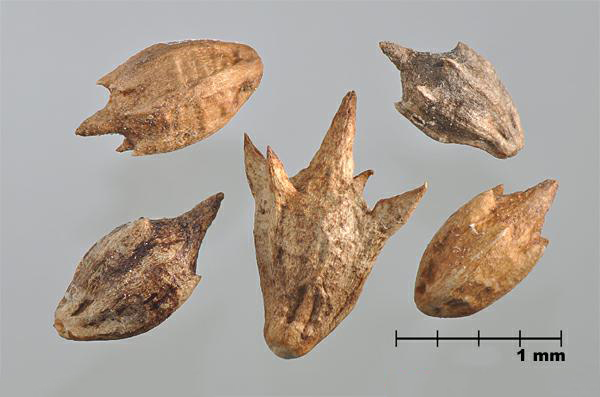

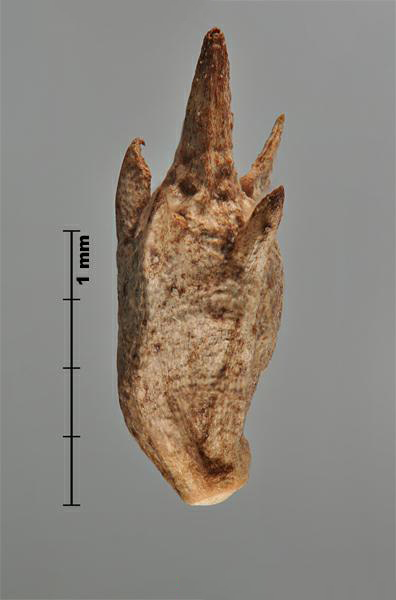
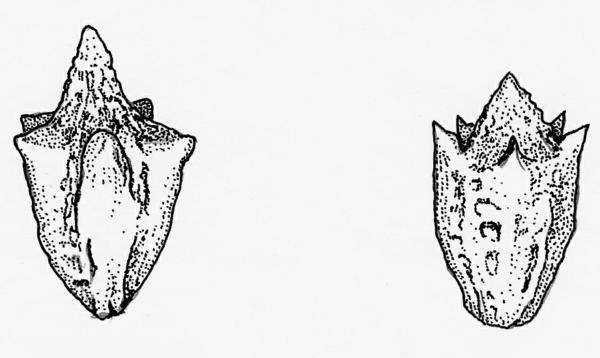
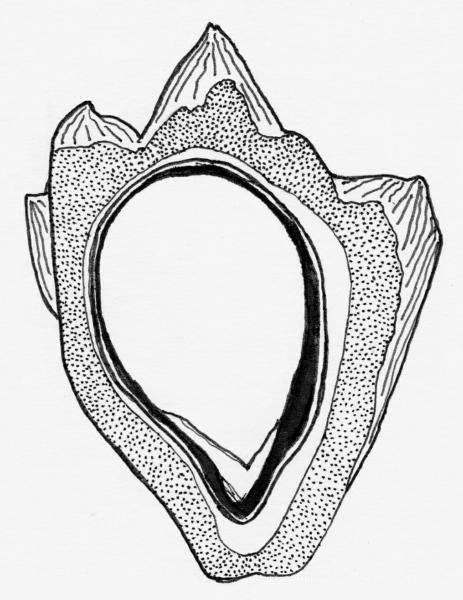
Similar species
